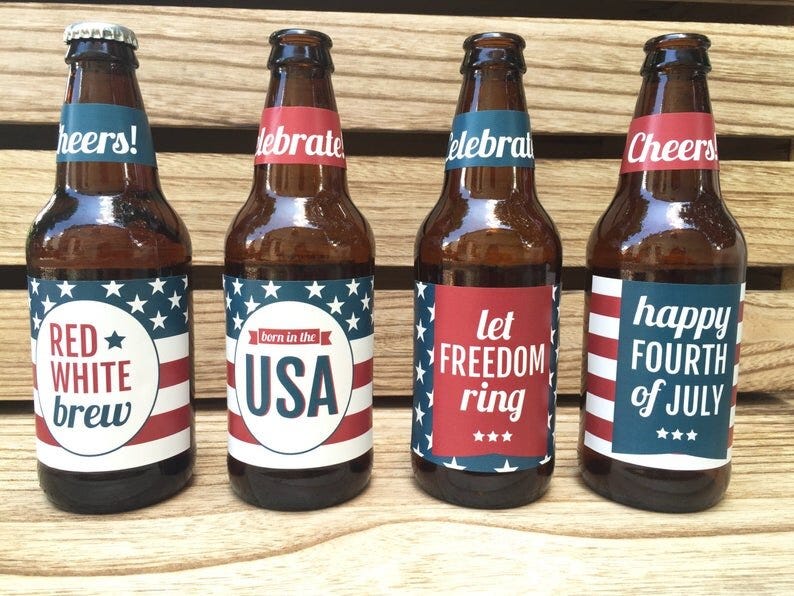Since it’s the Fourth of July weekend, we assume you’ll be reading this with a cold beer in your hand, so let’s talk about America.
What do 17th-century Dutch spice merchants have to do with the 21st century New York Stock Exchange and the dominance of the American economy? A lot, it turns out. Like so much of American history, the story starts with big ships ending up in the wrong spot.
The story starts in 1602 with the Dutch East India Company (“VOC”) where the spice trade was the high-risk/high-reward investment of the day. If you were a merchant looking to break into the lucrative but dangerous spice trade, you had to buy a ship, crew it, and then send it off to find the goods. Since sailors were still basically navigating by looking at the heavens, this was a fraught exercise. To wit, the VOC recorded 250 ships lost at sea in the 200 or so years it was in business.
If you were on the hook for the boat and the spices it carried to your investors and it didn’t deliver, you had to eat those costs (the crew was expendable, obvs). To spread out the enormous risk these expeditions carried, merchants began selling “shares” in their company to other investors.
In doing so, the shares in the VOC venture meant that investors could participate in the outcome of the expedition. If it worked, you profited according to your percentage. If it didn’t, you lost, but you lost only what you put in. It allowed investors to gauge their risk tolerance, given the specific expedition.
The risk-diversification approach proved popular and the Amsterdam Stock Exchange was born.
The Paris Bourse followed about 100 years later in 1724, followed by the Philadelphia Stock Exchange in 1790. The New York Stock Exchange (“NYSE”) was created just two years later in 1792. Now the largest stock exchange in the world, the NYSE was founded when dudes still dressed like this:
The NYSE’s premium location combined with America’s exploding economy meant that as American companies grew, the NYSE grew alongside it. Add in the invention of the electronic telegraph meant that the NYSE was the preeminent place to trade stocks in America. So, like most things, America didn’t invent it, we just made it ours.
The sophistication of these early exchanges was impressive but rarely meant anything to everyday Americans. Stock exchanges were for rich people to make money and hedge risk. The current buzzword “retail investor” didn’t even exist (a shorthand for middle-class Americans).
This paradigm persisted well into the 1980s. Up to that point, there was no need for someone in the middle class to care about the stock market. A combination of low life expectancy, high-interest rates on savings accounts, and company pensions meant saving for retirement via the stock market was largely unnecessary.
If you did want to play the stock market, you paid this guy $50 per trade:
The paradigm has changed in the last thirty years.
Good news first:
An American born in 1990 has a life expectancy of 75, four years longer than someone born in 1960.
Technology like Robinhood (and other, superior options) have disintermediated bozo Master of the Universe-types, meaning that investing in the stock market is accessible to everyone and costs nothing.
Now, the bad news:
The percentage of Americans with a pension has fallen from 60% to about 20%
And our savings account functionally charges us money (after inflation).
This means investing in the stock market is no longer optional. It is a requirement if you want to retire.
What’s the Upside?
The stock market was invented over 400 years ago but continues to be a driving force in the world's economy. Luckily for everyone reading from America, our stock market remains the gold standard. Since the days of the Dutch East India Company, stock markets have allowed investors to participate in the growth of successful companies (like Amazon, Apple, Google, etc.) so that you make money when the company makes money.
Remember that when you’re crushing your beer that’s likely owned by a multinational corporation that trades on the New York Stock Exchange. U-S-A!
For Your Weekend
Watch
‘Indiana Jones and the Dial of Destiny’ Is Big, Silly, Stupid, and Awe-Inspiring by Adam Nayman (The Ringer)
There’s no doubt that, at two hours and 34 minutes, Dial is too long, and yet without its inflated running time, it probably couldn’t justify its genuinely epic—and preposterously satisfying—final act, which succeeds in evoking the earlier films’ sense of awe by committing to the science-as-magic conceit and taking it all the way back to the primal scene. That it’s all a little silly is a compliment: More movies could stand to take this sort of big swing, which brings the series closer to the edge of The Twilight Zone than ever before.
Read
Why the 'Raiders of the Lost Ark' Truck Chase Is Still the Franchise's Best Action Scene by Robert Brian Taylor
Forty years after its release, Raiders of the Lost Ark remains a two-hour-long masterclass in how to stage an action sequence. However, even in a movie full of punishing fist fights, thrilling shoot-outs, and daring escapes, there’s still one scene that stands above the rest: the truck chase. A perfect blend of stunt work, editing, performances, and music, the truck chase set a bar that every Indiana Jones sequel – heck, that every action movie, period – has been trying to reach ever since.









